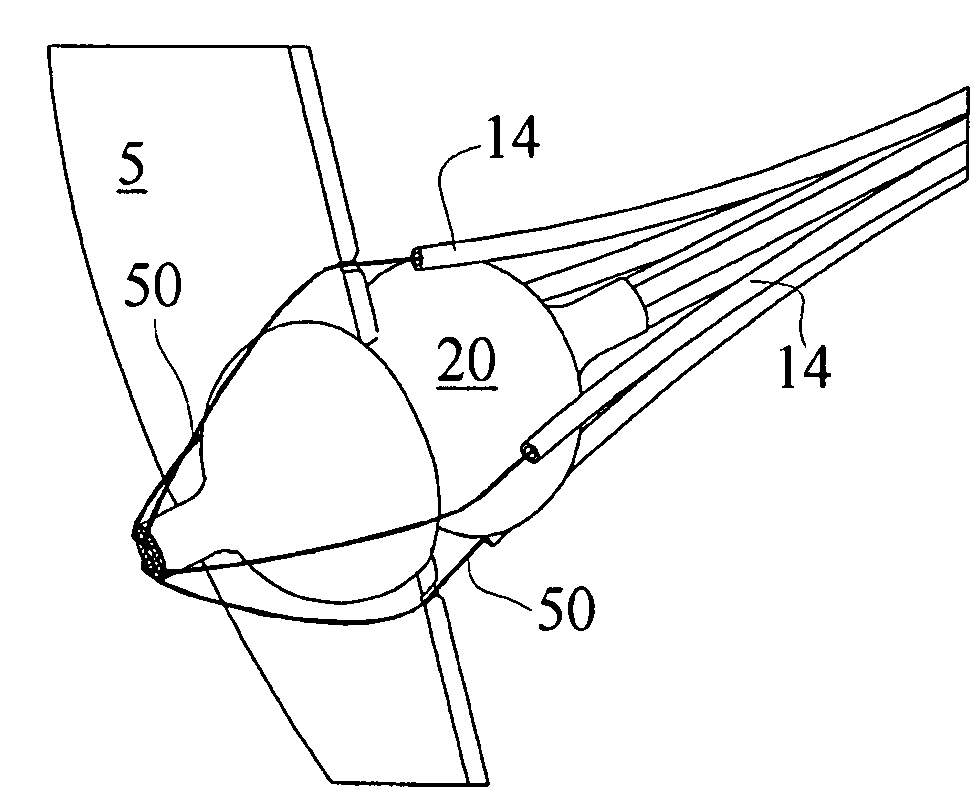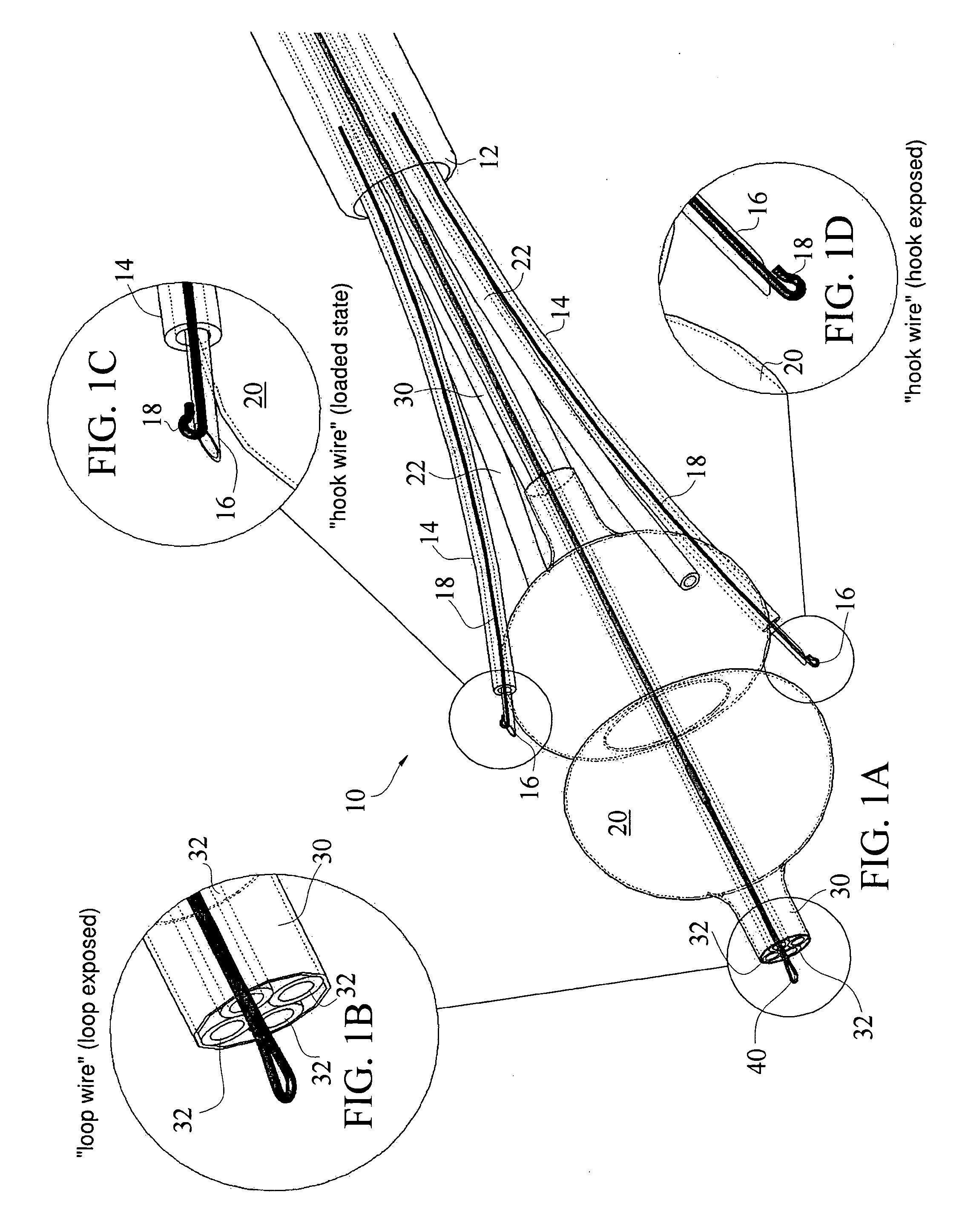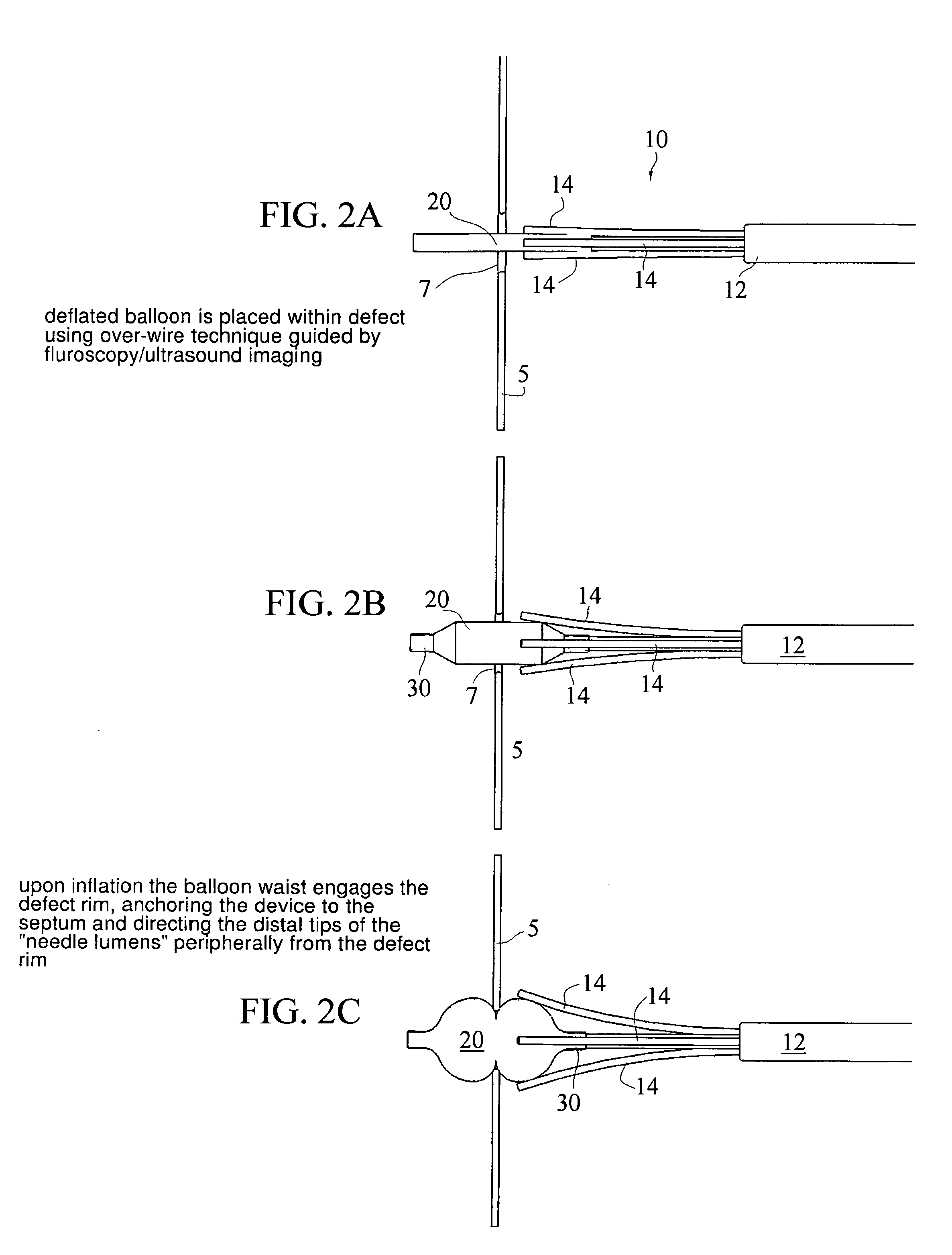Noninvasive trans-catheter method and apparatus for remote suture placement such as for septal defect repair, left atrial appendage closure, pacemaker electrode placement, mitral valve repair, and other inner-cardiac and inner-arterial applications
a transcatheter and remote suture technology, applied in the field of non-invasive transcatheter method and remote suture placement, can solve the problems of large amount of oxygen-rich (red) blood leakage from the heart's left side back to the right side, 25% lifetime risk of mortality in unrepaired atrial septal defects, and hole in the atrial septum
- Summary
- Abstract
- Description
- Claims
- Application Information
AI Technical Summary
Benefits of technology
Problems solved by technology
Method used
Image
Examples
Embodiment Construction
[0088]Non-Invasive Trans-Catheter Septal Defect Repair Device 10
[0089]According to one non-limiting embodiment of the present invention, a summary or overview of a method of non-invasive transcatheter atrial septal defect repair comprises the steps of: advancing a positioning member 20 which is part of device 10 along a catheter 12 into the Atrial Septal Defect 7 of tissue 5, wherein at least one suture deploying lumen 14 is coupled to the positioning member 20 with a piercing member 16 within the suture deploying lumen 14; deploying the positioning member 20 within the Atrial Septal Defect 7 to align each suture deploying lumen 14 within close axial proximity to tissue 5 just adjacent to the Atrial Septal Defect 7; facilitating puncture of the tissue 5 adjacent the Atrial Septal Defect with the piercing member 16 to secure a suture line 50 through the tissue 5. A repair patch 90 may be advanced along suture lines 50 to repair the defect 7 and secured into place using an appropriate...
PUM
 Login to View More
Login to View More Abstract
Description
Claims
Application Information
 Login to View More
Login to View More - R&D
- Intellectual Property
- Life Sciences
- Materials
- Tech Scout
- Unparalleled Data Quality
- Higher Quality Content
- 60% Fewer Hallucinations
Browse by: Latest US Patents, China's latest patents, Technical Efficacy Thesaurus, Application Domain, Technology Topic, Popular Technical Reports.
© 2025 PatSnap. All rights reserved.Legal|Privacy policy|Modern Slavery Act Transparency Statement|Sitemap|About US| Contact US: help@patsnap.com



